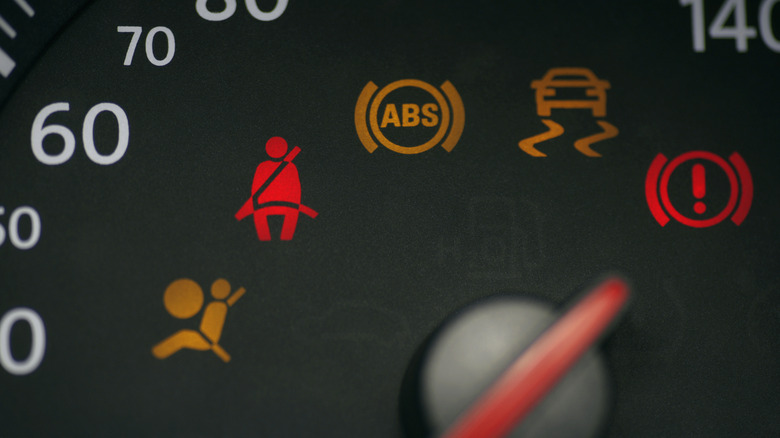
Martin Hospach/Getty Images
Nothing can fill a motorist with dread quite like seeing something on their vehicle’s dashboard light up. Well, ideally, everything will light up when you first start your vehicle, but after a couple of seconds they should then shut off. If one or more remain illuminated, it’s a sign you have some maintenance to take care of, and depending on the issue, it could be something you can fix on your own or need to take to a shop to resolve.
Your level of concern will vary depending on what precisely is lit up. It’s paramount to be aware of some of the most important symbols on your car’s dashboard that suggest a significant problem is afoot. Some of the lights are pretty easy to fix, and you can address the issue the next time you have a moment to spare. Still, don’t wait too long, as a small issue can quickly escalate to a major functional problem if it’s not taken care of quickly.
Some lights, like the check engine light, are self-explanatory. It means something has gone wrong with the engine, but we’ll go more in-depth on that later. Others you may have never had to deal with before, so it’s good to have a refresher on what the next steps should be. These are 10 of the most common dashboard warning lights every driver should understand.
Check engine
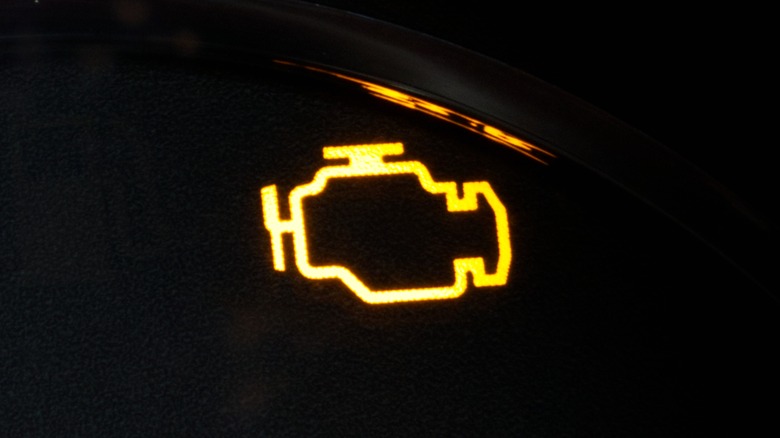
Garasi Craft/Shutterstock
The check engine light is arguably the symbol all drivers hate to see most light up on their dashboard. It’s unmistakable, as it’s the outline of an engine, although some vehicles forego the symbol and simply have CHECK ENGINE illuminated in all caps. Either way, this calls for your immediate attention, and you should ideally diagnose the problem as soon as you can.
One reason why the check engine light is so frustrating is that it’s relatively nebulous, as it could indicate any number of issues are present, from the innocuous to catastrophic. Some of the reasons why your check engine light may be on could be anything from a loose gas cap to faulty spark plugs to an issue with the catalytic converter. These all range wildly in terms of price to fix, so it’s good to run diagnostics as soon as possible.
In case you don’t own a code reader, you can typically go to an auto shop or even AutoZone to run a diagnostic. The way to use a code reader on your car is to connect it to the OBD-II port under the dashboard itself. This will relay a specific code you can either see for yourself via a number of OBD diagnostic apps, or someone working at the shop can hook it up and tell you. Make sure to follow these steps immediately, even if you’re driving so that you don’t inadvertently cause more harm to your vehicle.
Low tire pressure
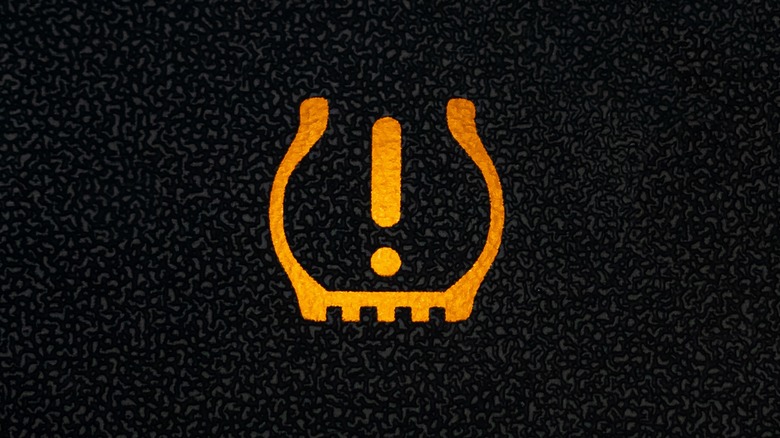
J.J. Gouin/Shutterstock
When you see an exclamation point inside a not-completed circle, it indicates a problem with tire pressure. The culprit could be in one or several of your tires, so when you see it come on, it’s a good idea to get off the road safely as soon as you can to inspect them. Most of the time, you just need to check the levels on all your tires to make sure they’re in the recommended range, with the tools for doing this being available at most gas stations. You’ll likely find one (or several) that are lower than the suggested psi, so you’ll need to inflate it to get it back in the proper range.
After you fill up the problem tires, the light should turn off on its own after driving for a few miles. In the event it remains illuminated, you may need to reset it. It’s vital to remain aware of how frequently the low tire pressure light comes on, as your tires ideally shouldn’t lose that much air too quickly. If it comes back on after you’ve just refilled a tire and it’s the same tire causing issues again, you may have a leak on your hands that requires patching or replacement.
Then again, the low tire pressure light may remain on even though the tires aren’t low. This could indicate the sensor battery needs to be replaced, although this usually only needs to be done once every 90,000 to 120,000 miles.
Battery
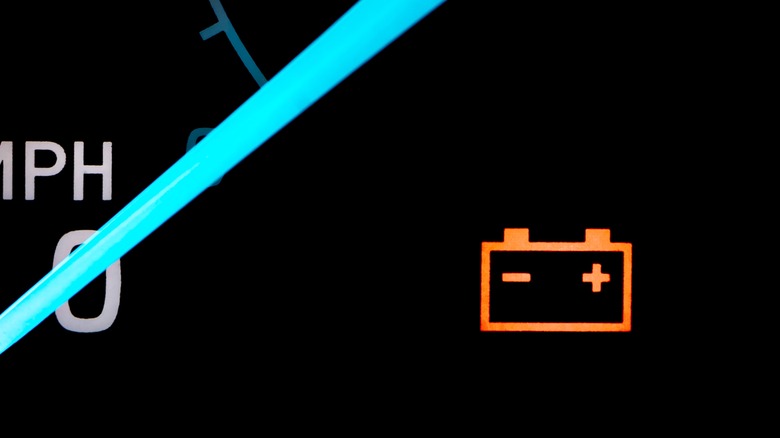
J.J. Gouin/Shutterstock
One of the easiest ways to tell if your car battery is dead is to see if the lights work properly. Another sign there’s a problem is if the battery light remains on even after those first few seconds of starting up your vehicle. This may seem counterintuitive because how could your car get going in the first place if there were battery problems? More than likely, there’s a charging issue at play where the battery isn’t giving enough power to the rest of the car for it to function optimally. Some of the issues an illuminated Battery light could indicate include loose wiring, damaged plates, and corroded cables.
There are a few things you can try to do on your own before taking the car to a shop. You can ensure the cable clamps are securely in place and try to clean off any corrosion that may have built up that’s interfering with it’s function. Make sure you follow all the necessary steps to easily and safely clean a car battery so that you don’t injure yourself. Then again, it may simply be time for a new battery, as most are only designed to last between three and five years, although some batteries can last up to a decade if properly maintained.
Engine oil
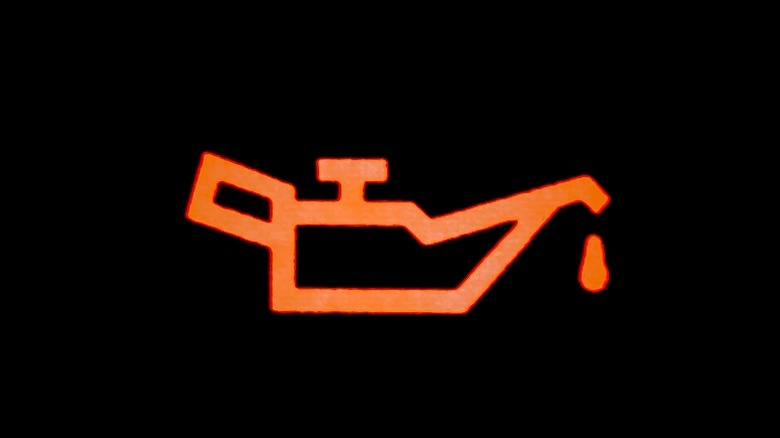
J.J. Gouin/Shutterstock
Do you know how often you can go between oil changes? With modern advancements, many cars made today can go between 5,000 and 7,500 miles between changes, with some being able to go up to 15,000. However, even if you’ve lost track of how many miles it’s been since your last oil change, you have a light on your dashboard that’ll tell you. This symbol looks like a canister with a drop of oil coming out the end, and most of the time, this coming up on the dashboard means it’s time to replace the oil. The first thing to do is to put new oil into the system, and if that’s the culprit, the light should turn off.
In the event the engine oil light is still on after a change, it’s possible you have a leak. The easiest way to see if there’s a leak is to inspect whether your car leaves behind a puddle of oil after it’s been parked for a while. There may also be a burnt oil coming from your engine if there’s not enough oil circulating through the system to lubricate everything.
Another explanation could be a component has broke or worn out, such as the oil pump or piston ring. If you can’t figure it out on your own, it’s good to have a professional look at it because your engine not getting sufficient oil could lead to total failure if you’re not careful.
Coolant level
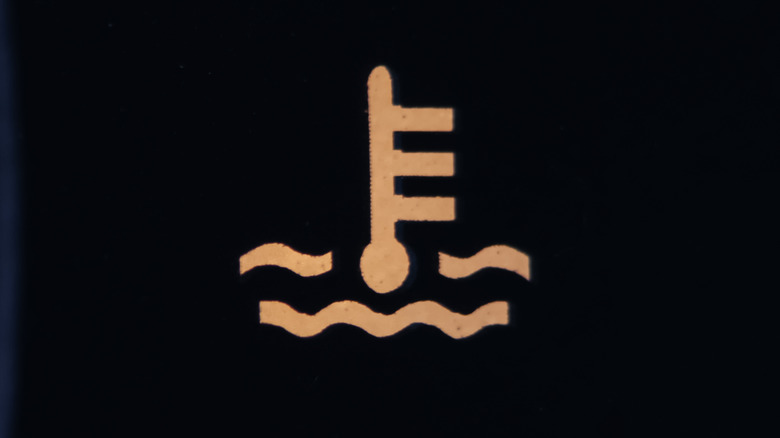
ERIK Miheyeu/Shutterstock
The reason the coolant level light looks like a thermometer coming out of some waves is because coolant is responsible for preventing the engine from overheating. An engine getting excessively hot could lead to failure and possibly even a fire breaking out. The most immediate step to take is to power your car down so that the engine isn’t continuing to work. After giving the vehicle a break, you can pop the hood to check the coolant levels, taking caution not to burn yourself on any of the metal components. You may need to replace your specific car’s coolant – for many vehicles, this will need to be done once every 30,000 to 50,000 miles.
Your engine may simply need a top-off of extra coolant so that it can regular its temperature better. However, if you pour in coolant to optimal levels and the light remains on, it’s possible there’s a leak in the system, similar to how the engine oil light can remain illuminated in certain instances. This will require help from a professional mechanic, but it’s not a good idea to drive to the shop yourself. Call a tow truck or else you run the risk of overheating the engine further. It’s a lot easier and cheaper to fix a leak than replace an engine, so don’t overdo it.
Brake system
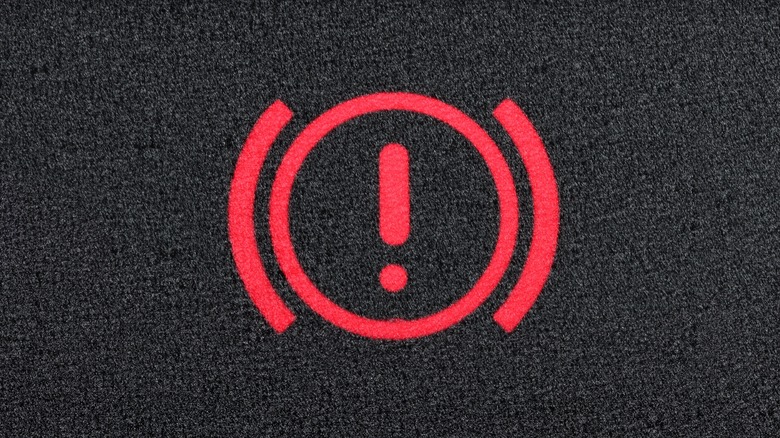
Bjoern Wylezich/Shutterstock
You never want to have a problem with your car’s brakes, as you put yourself, your passengers, and everyone else on the road in danger if you can’t come to a complete stop safely. The brake system light on your dashboard, which consists of an exclamation point in a circle with some extra lines present to really get your attention, indicates that something has gone wrong. Of course, this light will also come on if you try to drive with the parking brake still engaged, so you may just need to disengage it to make the light go away.
However, if that doesn’t resolve the issue, it’s possible you need to adjust the anti-lock braking system, replace some worn-out brake pads, or fill up low brake fluid levels. You may need a tow to an auto shop to get an inspection or hire a mobile brake service to come to you to see what’s going on. You may be able to do some diagnostics yourself by determining if the brake system light turns on when you hit the brake pedal. When there’s a connection between those two, the light often indicates low brake fluid levels or hydraulic loss. You may still be able to stop for the time being, but it may not take long to lose that ability entirely.
Fog lights
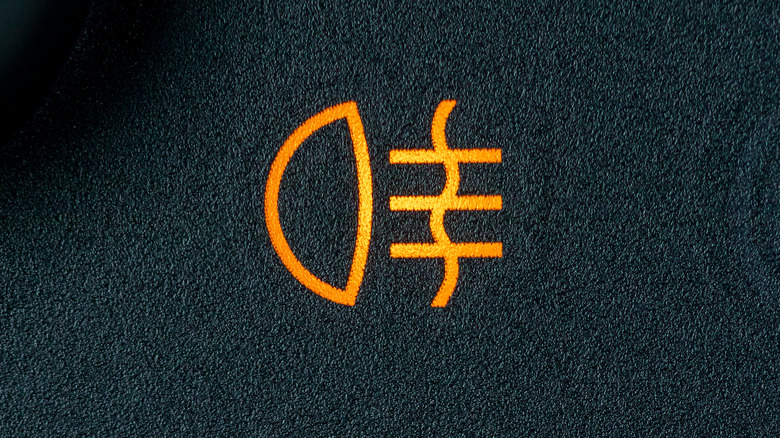
otomobil/Shutterstock
This one isn’t technically a warning light, per se, but it’s still important to know what that football shape with lines in front of it means. This is an indicator that your fog lights are currently activated. Fog lights aren’t available on every vehicle, so it’s possible your car won’t have this option. However, if you do, it’s good to be aware of it.
It’s good to have fog lights when driving in conditions with limited visibility, like when it’s snowing or foggy. Bear in mind, this is different from your high beams, which all cars come with for safety. Depending on the make and model of your vehicle, you may be able to activate the fog lights through a knob or touchscreen. It’s critical only to turn those fog lights on if you’re in a genuinely low-visibility environment and can’t see more than roughly 300 feet in front of you.
The reason you don’t want fog lights on all the time is that they can impair the vision of oncoming traffic. This includes rear fog lights because it can prevent someone driving behind you from seeing if you’re using your brakes. Having a symbol on your dashboard may remind you the fog lights are still on so that you can promptly shut them off if they’re no longer needed. Your fellow motorists will thank you for being mindful.
Stability or traction control
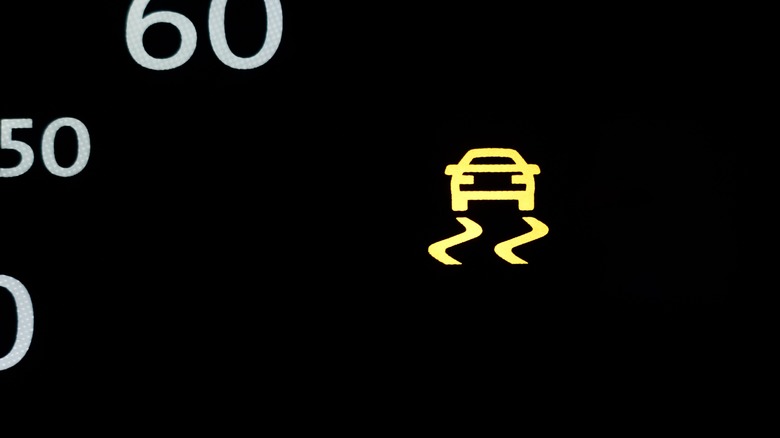
Vladeep/Shutterstock
Since 2012, new cars are required to contain new traction systems to help vehicles maintain their integrity when driving over slippery terrain. You can turn this system on and off at your leisure, but unless it’s an extremely rare circumstance, you’re better off keeping it on. For example, when you drive over a slick road after a storm one or more of your tires may not be able to grip the road’s surface as well. However, the traction system gives the tires a better chance of gripping where it can so that you can maintain control and not spin out.
When you see the traction or stability control light illuminate on your dashboard, it’s usually a good thing. It means the system is working as it should and that it’s trying to get the tires to maintain cohesion with the road. It’ll light up temporarily but should go back off once all the tires are secure. Unfortunately, you more have an issue if the light regularly comes on when you’re driving normally with nothing dangerous about the road. In this case, a blinking traction control light could means there’s an issue with the wheel-speed sensors.
If you’re driving in optimal conditions and the light is steadily on, it could indicate the traction system has been shut off. Consider this a reminder to turn it back on. You can shut down and restart your car, and the light should be gone.
ABS (anti-lock braking system)
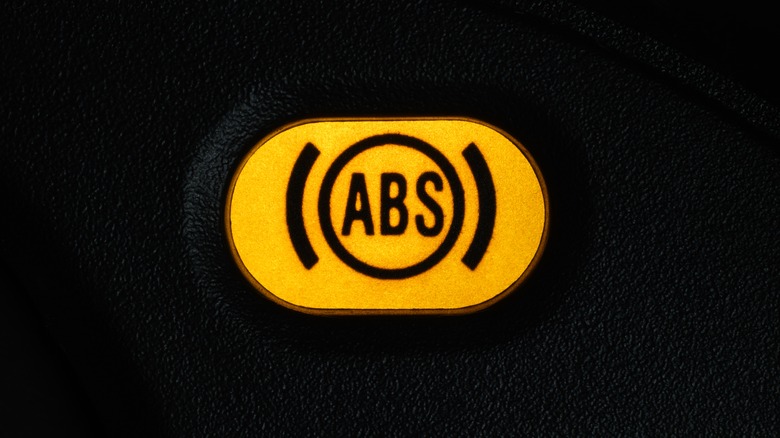
Yury Nikolaev/Shutterstock
It’s easy to know when there’s something going on with your anti-lock braking system (ABS) because a light reading ABS will come on your dashboard. It may seem superfluous at first to have this dashboard warning light because there’s already the brake system light, but the ABS signal is for something a bit more specialized.
In fact, the anti-lock braking system is closely linked with your vehicle’s traction control. They share a self-diagnostic system, so occasionally, the ABS light coming on indicates an issue with your car’s stability. Another similarity they share is that it’s possible to turn off the ABS, too, although you generally don’t want that to happen and should fix it if that’s what the light means. In other instances, the dashboard light coming on points to things like low fluid levels and faulty sensors.
The first car to implement ABS was the 1978 Mercedes-Benz S-Class W116. ABS revolutionized vehicle safety, so while it’s easy to take for granted, don’t ignore this signal and get to the bottom of the problem swiftly.
Low fuel
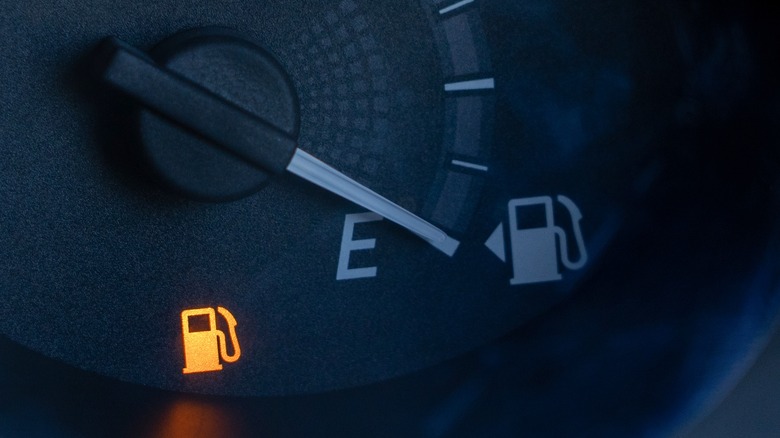
Sakorn saenudon/Shutterstock
The final dashboard warning light on this list is the one most people are probably most acquainted with. It’s right next to your fuel gauge, and when you’re running low on gas, you’ll see the symbol of a gas pump light up. This is an indicator you’re running low on fuel and need to fill up when you get the chance. While it may seem like no big deal, it’s not entirely safe to drive your car consistently on low fuel.
Constant low fuel can increase your car’s chances of overheating or misfiring cylinders. A good rule of thumb is to keep the tank at least a quarter full at all times. With that being said, most cars will have the dashboard icon light up when your tank only has about 1/16th its capacity of gas left. Speaking generally, this should be good to drive for another 30 to 50 miles, although more fuel-efficient vehicles may get a bit more leeway.
If this signal begins flashing, you’re really on your final legs and should fill up immediately or else risk getting stranded on the side of the road. This is particularly important if you’re traveling long distances in a single outing or going on a trip with gas stations few and far between on the route. When in doubt, fill it up.